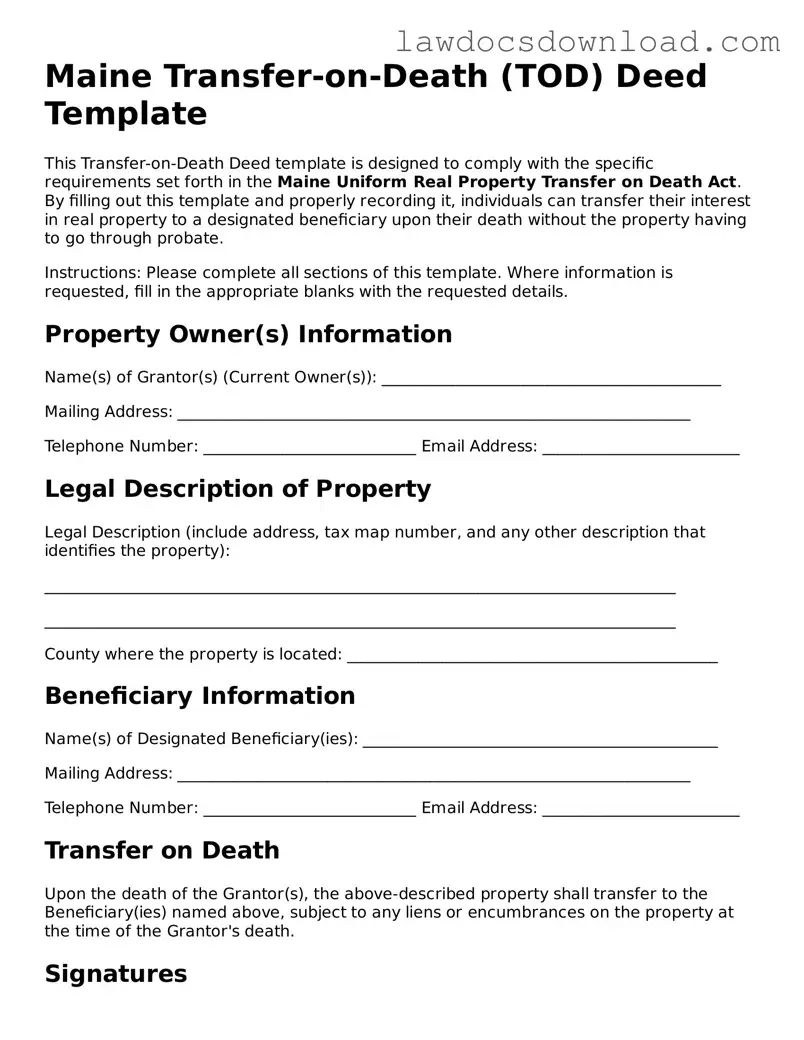Maine Transfer-on-Death (TOD) Deed Template
This Transfer-on-Death Deed template is designed to comply with the specific requirements set forth in the Maine Uniform Real Property Transfer on Death Act. By filling out this template and properly recording it, individuals can transfer their interest in real property to a designated beneficiary upon their death without the property having to go through probate.
Instructions: Please complete all sections of this template. Where information is requested, fill in the appropriate blanks with the requested details.
Property Owner(s) Information
Name(s) of Grantor(s) (Current Owner(s)): ___________________________________________
Mailing Address: _________________________________________________________________
Telephone Number: ___________________________ Email Address: _________________________
Legal Description of Property
Legal Description (include address, tax map number, and any other description that identifies the property):
________________________________________________________________________________
________________________________________________________________________________
County where the property is located: _______________________________________________
Beneficiary Information
Name(s) of Designated Beneficiary(ies): _____________________________________________
Mailing Address: _________________________________________________________________
Telephone Number: ___________________________ Email Address: _________________________
Transfer on Death
Upon the death of the Grantor(s), the above-described property shall transfer to the Beneficiary(ies) named above, subject to any liens or encumbrances on the property at the time of the Grantor's death.
Signatures
This deed must be signed in the presence of a notary public by all current property owners and then recorded in the county where the property is located before the death of the Grantor(s).
______________________________________ Date: ________________
Signature of Grantor
______________________________________ Date: ________________
Signature of Grantor (if more than one)
State of Maine
County of _____________________
Subscribed and sworn before me this _____ day of _______________, 20__
______________________________________
Notary Public
My commission expires: _______________
Recording Information
After signing, this document must be recorded with the county recorder’s office in the county where the property is located. Contact the local recorder’s office for information on recording fees and any additional forms required for recording.
